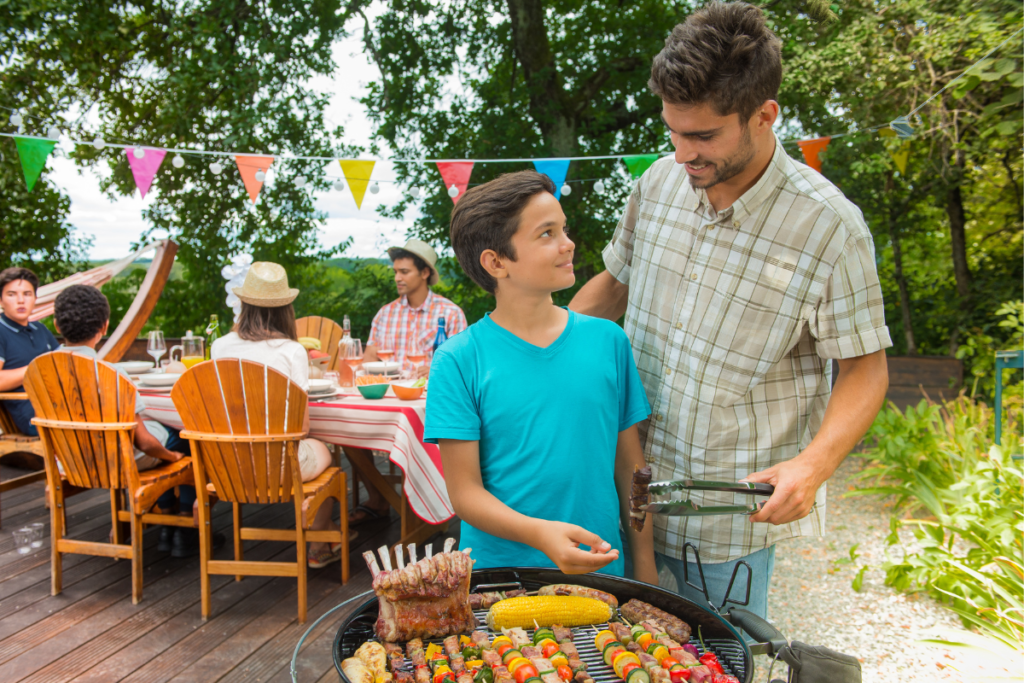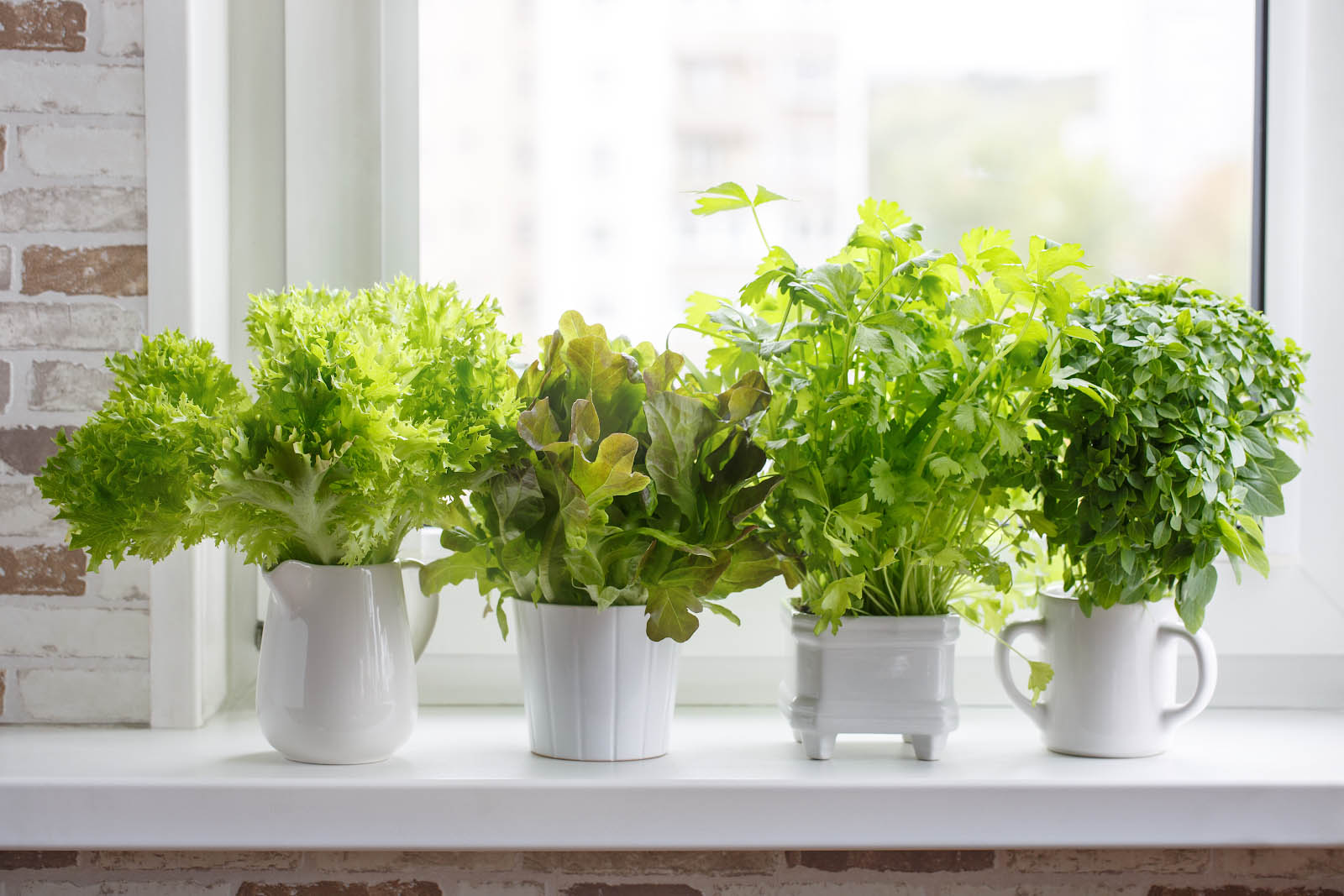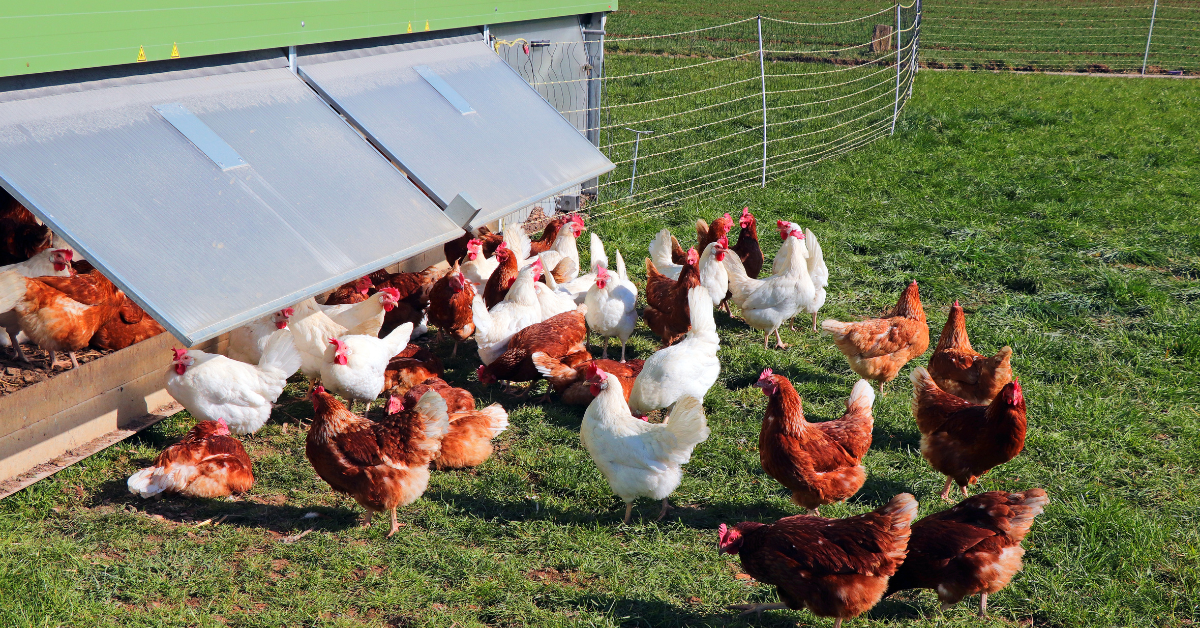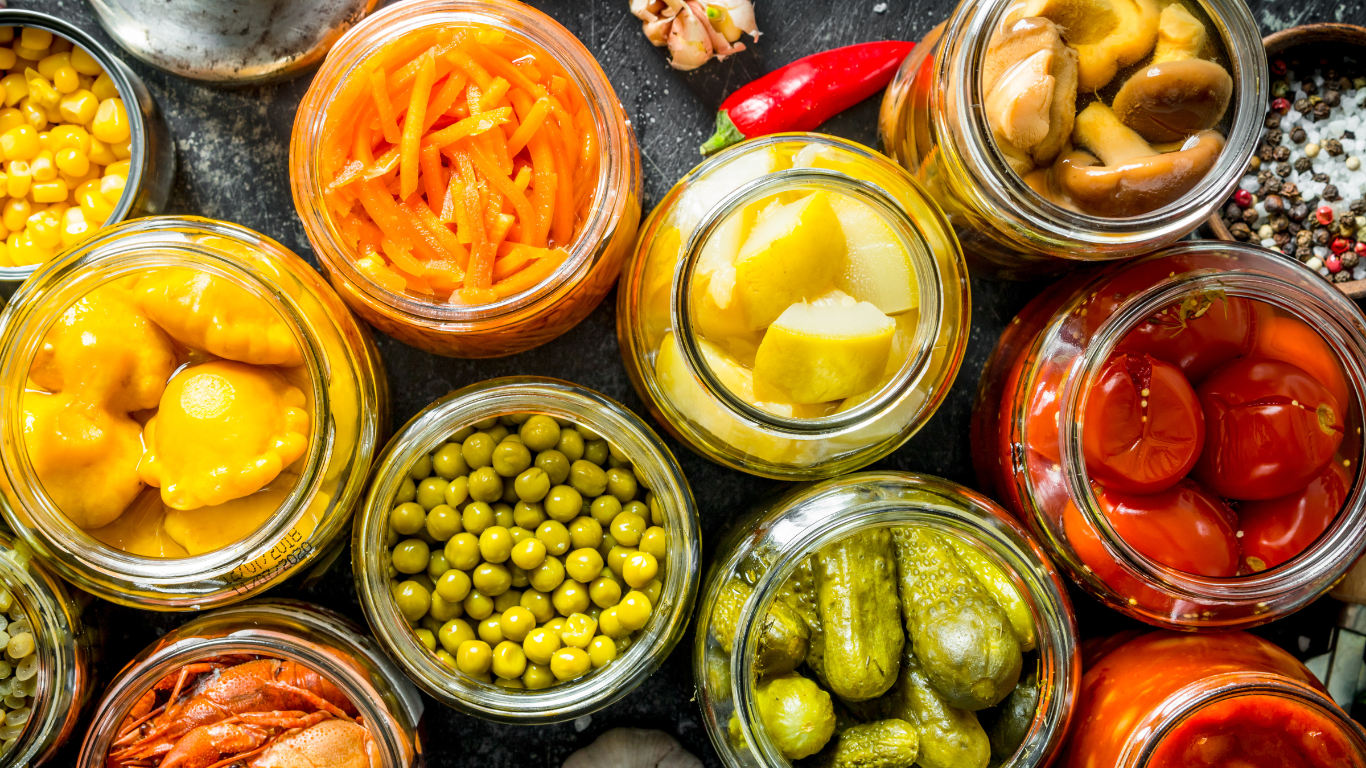
Why Bother Preparing For a Food Shortage?
Are your instincts telling you to prepare for a sudden food shortage? Your instincts may just be right! The ongoing global food crisis has already put millions of people at risk of starvation.
Most of us don’t think about our daily and weekly food supply because it is readily available at any local supermarket. However, what happens when the “system” can no longer provide for you and your family?
This is where food preparedness comes into play! After all, the best way to survive a food crisis is to be self-reliable. Here’s a list of the 8 best ways you should be preparing for the upcoming food shortages:
1. Plan Ahead
Unless you have a magic genie in a bottle, you should plan ahead so you are prepared when the food shortages do strike your area. Some of that preparation includes buying all the extra food, equipment, and utensils you’ll need to produce, store, and consume your own food.
Think about:
- How many people are you preparing for?
- How many calories of energy are you and your family going to need per day?
- How much time worth of a nutritious diet do you have stored for each person?
Keep in mind that in general women should eat 2000 calories per day and men should eat 2500 calories for a healthy intake. And of course, you can’t forget about food for your pets.
Calculate how many calories you should store in under a minute, using our emergency household calorie calculator.
You’d be surprised to learn that your environment probably already holds a lot of useful resources that could be crucial in a food crisis. Educating yourself about the various aspects of food preparedness such as growing crops, food preservation, hunting, and fishing could literally save your life someday.
2. Stock Up On Food
Ready-made meals can be a great option because of a couple reasons:
- They are prepared and stored to last for decades — which can’t be said about tore-bought foods
- They are designed to be quick and easy to prepare
- You can get an assortment of tasty meals that you’ll enjoy during an emergency
- Although more expensive, you can still get great prices for ready-made meals
Here is a list of our favorite ready-made emergency meals that you simply can’t go wrong with:
You can also find great, affordable survival foods at your local grocery store.
Some foods are just better than others when it comes to shelf life, calories, and nutrition. Ultimately, stocking up on the right foods will increase your chances of survival.

Choose foods that contain plenty of calories, minerals, vitamins, nutrients, and other essentials, and avoid those that spoil quickly or require refrigeration. If you don’t need equipment such as a stove to prepare it – even better.
Most survival foods are best stored in a dark, dry, cool place. The ideal temperature is usually between 40 and 70 degrees Fahrenheit.
Our favorite survival foods that can be found at your local grocery store include:
| Food | Benefits |
| Rolled Oats | -Can last up to 25 years (if properly stored), or up to 2 years in regular retail package -Easy to prep -Relatively high calories per dollar |
| Honey | -Very long shelf life –Many uses like health and medical uses |
| Protein Powder | -Shelf life of about 1 and a half years -Good addition to meals to be mixed in |
| Dried or canned beans | -Cheap -Many calories, nutrients & vitamins -Great source of protein |
| Powdered Milk | -Great source of calcium & protein -Shelf life of 2-10 years -Can be used to make butter |
| Rice | -Cheap -Can be stored for 5 years or longer if stored properly -Calorie-rich -Other purposes such as de-clumping salt, fixing electronics, rice water, and heating/cooling packs |
| Pasta | -Shelf life of about 2 years -Cheap -More calories per dollar than rice |
| Powdered mashed potatoes (bagged, potato flakes) | -Cheap -Shelf life of up to 2 years |
| Wheat | -If stored properly in an airtight container, it can last up to 12 years -Great source of starch, calories, protein, and vitamins |
| Soybeans | -If properly stored, they will last up to 3 years in a dry environment |
| Dried Corn | -If stored in the right conditions, it can last up to 10 years! -Good source of calories, carbs, and fat – with some protein as well |
| Bouillon Products | -Bouillon cubes can last about 2 years |
| Canned Meat & fish | -Generally has a shelf life of about 3 years -Great source of protein -Calorie rich -Pre-cooked, no preparation needed before eating (great for power-outage situations) |
| Other canned food | -Long shelf life -Often open-and-eat with no prepping needed |
| Whole white crackers | -Best if eaten no more than 9 months after packaging date. |
| Peanut butter | -If unopened, it can be kept for about 9 months -A good source of calories, fat, protein, and carbs. |
| Energy bars | -Can last up to 5 years |
| Cereal | -Can be stored up to 12 months |
| All-in-one meals | -Are usually tasty, with high nutritional value, and a long shelf life. But it can be more pricey. -Shelf life depends on the product |
| Nuts | -In an airtight container, nuts can be stored up to 6 months |
| Spices/seasoning | -Make your survival food more flavorful and enjoyable |
| Avocado oil & other oils | -Avocado oil has a shelf life of up to 1 year |
| Clarified butter | -Has a shelf life of up to 1 year |
| Coffee | -Unopened coffee will last about 5 months |
| Dried meat (beef jerky) | -If unopened, it can last 1-2 years -Great source of protein |
Other recommended items to consider are:
- Baby food (if needed)
- Pet food (if needed)
- Rubbing Alcohol/Vodka: has many uses at home such (fire starter, hand sanitizer, antiseptic for wounds, disinfectant, etc)
- Apple Cider Vinegar: has many uses around the house
- Vitamins/Multivitamins
3. Build a Chicken Farm
There are many reasons why more individuals are turning to poultry farming in recent years.
Many preppers have examined the world around them and concluded that they must be prepared for major, world-changing disasters.
Chickens are a fantastic option of livestock for building a self-sufficient farm to withstand a catastrophic scenario. Benefits of raising chickens are that you get tons of eggs, you can do it in your backyard at low cost, and chickens are very well adapted to cold climates. Living chickens can be bought at wholesale price for around $3-$30 depending on the breed, and a chicken coop costs anywhere between $200-$3,000 depending on the size and features.
To start with poultry farming, you should have at least 10-15 square feet of space available per chicken, and be prepared to invest at least $500 initially to get started.
Chickens are mostly independent creatures and definitely less time-consuming and labor-intensive to care for than cattle. However, downsides include that chickens can be dirty and smelly, and need constant protection from predators.

The technique of harvesting a significant quantity of chicken eggs from hens is known as egg farming. If you plan to build a more advanced chicken farm that produces additional end products like raw/cooked chicken and feathers, you may need extra equipment and facilities, such as egg-dispensing and bird-killing technologies.
4. Build a Cattle Ranch
Unlike chicken farming, cattle ranching is hard labor. Taking care of cattle is more demanding, labor-intensive, and potentially more dangerous than chickens. Cattle need food and water on a regular basis, regardless of the weather conditions. Taking care of cattle is probably not something you can do on your own, but could definitely be worth it for a group of people given the benefits of dairy products as well as beef.
Before you engage in cattle ranching, you should consider several factors:
- The breed of your cattle
- The type of environment you’re in
- Weather conditions in your area
- Access to cow feed
- Places to buy cattle
- Reliable source of expert advice
- Financing your cattle ranch
Cattle ranching requires a big commitment and hard work, but it can also become a tremendous business for your family or sustainable food source for the community. A big part of running your own cattle ranch is understanding the costs involved and planning accordingly. Here’s a list of costs to keep in mind:
- Purchasing animals
- Ranch equipment
- Livestock care and health needs
- Animal food and pasture care
- Animal facilities
- Employing staff
- Marketing
5. Learn Food Preservation Techniques
Learning which foods can be preserved and how to preserve them can save your life in a food crisis. The optimal method to preserve a food depends on the food itself, and could include:
- Chilling
- Freezing
- Drying/Dehydrating
- Sugaring
- Salting
- Smoking
- Mixing with edible oils
- Canning
- Vacuum packing
- Pickling
Meat, fish, and fruits can be preserved by canning. Meat and fish can also be preserved by smoking, dehydrating, salting, and vacuum packing.

Sugaring is good for jams, jellies, and confections. Adding edible oils to foods or pickling could also slow spoilage. Dried foods like pasta and rice tend to last longer than moist foods or those with high water content.
Food Preservation Equipment
Having the right tools and equipment to preserve your food supplies in times of crisis could go a long way in feeding you and your family. Here’s a list of food preservation equipment great for home use:
- Pressure Canner (for preserving vegetables, meat, seafood, and poultry)
- Glass jars and lids
- Mylar bags with mylar bag sealer (for storing dried goods)
- Blender or food processor (for mixing foods intended for preservation)
- Dehydrator (a small electrical appliance for drying food)
Our Favorite Food Preservation Tools of All Time
- All-in-one, high quality canning set
- Great value
- Durable, comfortable, non-slip
- Top quality, results in amazing dried foods
- Quiet cooking
- Easy to clean, dishwasher-friendly trays
- 5 BPA-free trays, up to 48H timer, with auto shut off
- This complete set includes everything you need to get smokin’
- Top-notch quality
- User-friendly
Don’t forget to practice your food preservation techniques When you can.
6. Clean Water for Cooking and Hydration
Having a clean source of water is just as important, if not more important than food. You will need to make considerations for both drinking water and cooking water.
Storing lots of water is recommended, but can also be impractical because water is heavy and can take up a lot of space. So you should find a good primary source of natural water, and be prepared for water filtration.
The best primary sources of water, as a general rule, are those that flow. Rivers, streams, and creeks are examples. From there, you go to more stationary bodies of water, such as lakes and ponds.
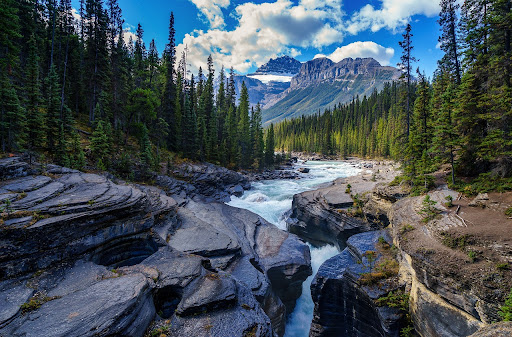
Water filters get rid of things like sediment, metals, toxins, pollutants, bad odors, and bacteria that don’t belong in water. This makes the water cleaner and oftentimes taste better. There are five different kinds of water filters:
- Mechanical filters
- Absorption filters
- Sequestration filters
- Ion exchange filters
- Reverse osmosis filters
But specifically to prepare for emergency situations, we recommend getting portable water filter, to make you more versatile and flexible.
7. Open-Fire Cooking
If all else fails, you can always resort to open-fire cooking as long as you have a match or lighter, some dry tinder and wood, and the knowledge to make a fire. The type of bonfire you’ll end up with depends on how you position the burning sticks and logs.
If you arrange your logs in a teepee or stack them vertically in a log cabin while creating a fire, the center point will be the hottest. However, spreading the wood out evenly will create a more tempered flame.
Buffalo Trace Distillery has a great tutorial on starting a fire for outdoor cooking:
You may be wondering, “What can be cooked on an open fire?” Well, virtually anything. Here’s a list of favorite foods items that are great for open-fire cooking:
- Grilled cheese
- Pizza
- Grilled shrimps
- Stew
- Soups
- Rice dishes
- Meats
- Bread
- Vegetables
- Fish
8. Hunt and Fish
Hunting and fishing are classic examples of survival methods that people have used over thousands of years, from cave people to modern times. Depending on the prey and type of big game available in your area, different hunting and fishing techniques (and equipment) should be used. Learning about the various sources of hunting and fishing in your area is key so you have time to prepare.

In addition to hunting and fishing, foresting and gathering nutrients from roots, nuts, mushrooms, and fruits could also be an option. However, you need expert guidance in order to discern which potential food items are safe to eat, and which are not. Several mushrooms and fruits (among other things) can be poisonous if consumed by humans.
9. Start a Garden
Having your own garden at home is a great way to save money and eat healthier – not to mention prepping for times of crisis. A little backyard plot, if cared for properly, can provide a bounty of fruits and vegetables, potentially saving a lot of money on shopping bills and could save your life in case of severe food shortages.

You’ll need some water for your plants, weed killer, and fertilizers to look after your garden. Some excellent crops to grow include lettuce, beans, sweet potatoes, peas, and radishes. Don’t forget to harvest your crop when it matures.
Our Favorite Gardening Set of All Time
- 83-piece set — all the gardening tools you need
- Great value
- Non-slip ergonomic handle tools
10. Make Canned Juices
Ordinarily, fresh juices make for an awful emergency prep food considering their short shelf life. Most juices only last a couple days even when refrigerated, which makes them less than ideal for long-term food storage.
However, certain canned juices, particularly those containing low levels of PH (high levels of acidity) could actually last for a long time. Examples include lime and lemon juice. Another option is to buy or even make your own powdered juice which can be held in dry form and mixed with water prior to drinking. A sealed and unopened drink mix could potentially last for as long as 3 years.
11. Become Energy Independent
Whether you use an electrical or gas stove and oven, a fridge & freezer – energy is a key ingredient to preparing food. So it is smart to have a backup plan for when the power goes out, like a solar generator, so you can cook, store, and preserve your own food. When the electricity goes out, a 2,000-watt generator will power most of your essential appliances. However, keep in mind that some electric appliances like a dishwasher, oven, clothes dryer and water heater need between 1,000 and 5,500 watts.
Just to be on the safe side, make sure you have food on hand that does not require cooking for consumption.
Time to Get Prepping!
In times of a food crisis with rampant food shortages, the best thing is to be self-sufficient when it comes to your food and water. You don’t need a big enterprise to have your food needs met, but you’ll need careful planning and execution.
Now that you’ve got a better picture of how to survive the upcoming food shortages, it’s time to get prepping. It’s alright if you can’t focus on all areas at once – pick the ones most crucial to your survival first. Check out our guide on preparing for the upcoming energy crisis and don’t forget to share your best food crisis prep ideas in the comments down below.

